|
SEPTEMBER
2009
30th September 2009 - New
book
DEEP BRAIN STIMULATION
Peter Bain, Tipu Aziz, Xuguang Liu, Dipankar
Nandi
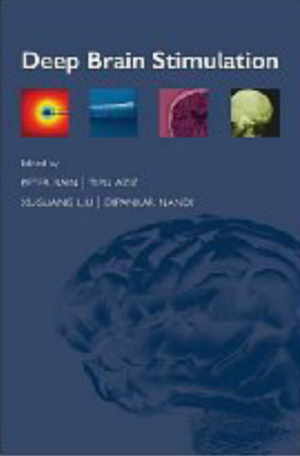 Publisher's
description : Deep brain stimulation (DBS) is increasingly used for the
treatment of patients with severe Parkinson's disease, but the technique and
science behind it is still poorly understood by most clinicians. This book is
intended to provide an overview of the use of DBS for movement disorders. The
first part of the book covers the varying surgical techniques involved in
implanting electrodes into various deep nuclei within the brain. The neuro-physiological
techniques involved in this process and the complex issue of programming the
implanted stimulator in order to optimize therapeutic efficacy and minimize
stimulation induced adverse effects. The second part of the book describes how
to select appropriate patients and describes the results of DBS treatment for
Parkinson's disease, dystonia and tremors. Edited by three of the world's
leading experts in the DBS field, this pocketbook provides neurologists,
trainees, and specialist nurses with an overview of the therapeutics use of DBS.
Click here for more details. For more
books concerning Parkinson's Disease go to
Parkinson's Disease Books. Publisher's
description : Deep brain stimulation (DBS) is increasingly used for the
treatment of patients with severe Parkinson's disease, but the technique and
science behind it is still poorly understood by most clinicians. This book is
intended to provide an overview of the use of DBS for movement disorders. The
first part of the book covers the varying surgical techniques involved in
implanting electrodes into various deep nuclei within the brain. The neuro-physiological
techniques involved in this process and the complex issue of programming the
implanted stimulator in order to optimize therapeutic efficacy and minimize
stimulation induced adverse effects. The second part of the book describes how
to select appropriate patients and describes the results of DBS treatment for
Parkinson's disease, dystonia and tremors. Edited by three of the world's
leading experts in the DBS field, this pocketbook provides neurologists,
trainees, and specialist nurses with an overview of the therapeutics use of DBS.
Click here for more details. For more
books concerning Parkinson's Disease go to
Parkinson's Disease Books.
September 2009 - New research
OCCUPATIONS ASSOCIATED WITH
PARKINSON'S DISEASE
Archives of
Neurology [2009] 66 (9) : 1106-1113 (Tanner CM, Ross GW, Jewell SA, Hauser RA,
Jankovic J, Factor SA, Bressman S, Deligtisch A, Marras C, Lyons KE, Bhudhikanok
GS, Roucoux DF, Meng C, Abbott RD, Langston JW.)
Complete abstract
 Work
in agriculture, education, health care, or welding was not associated with
increased risk of Parkinsonism. Unexpected increased risks associated with
legal, construction and extraction, or religious occupations were not maintained
after adjustment for duration. However, having worked in business, finance,
legal occupations, construction and extraction, or transportation and material
moving was associated with postural instability and gait difficulty.
None of the occupations,
job tasks, or task-related exposures were associated with Parkinson's Disease
being diagnosed at a younger age. Pesticide use made the likelihood of
Parkinsonism almost twice (1.9 times) more likely. Use of any of 8 pesticides
more than doubled (2.2 times) the likelihood. This risk was even higher (2.59
times more likely) with the use of 2,4-dichlorophenoxyacetic acid.
In order to refer to this article
on its own
click here. Work
in agriculture, education, health care, or welding was not associated with
increased risk of Parkinsonism. Unexpected increased risks associated with
legal, construction and extraction, or religious occupations were not maintained
after adjustment for duration. However, having worked in business, finance,
legal occupations, construction and extraction, or transportation and material
moving was associated with postural instability and gait difficulty.
None of the occupations,
job tasks, or task-related exposures were associated with Parkinson's Disease
being diagnosed at a younger age. Pesticide use made the likelihood of
Parkinsonism almost twice (1.9 times) more likely. Use of any of 8 pesticides
more than doubled (2.2 times) the likelihood. This risk was even higher (2.59
times more likely) with the use of 2,4-dichlorophenoxyacetic acid.
In order to refer to this article
on its own
click here.
26th
September 2009 - New book
UNDERSTANDING PARKINSON'S DISEASE : A SELF-HELP
GUIDE
David L. Cram, Xiao Gao, Steven Schechter
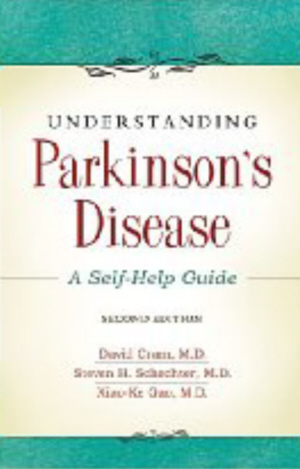 Publisher's
description : A simple, sympathetic guide to coping with a progressive,
disabling brain disorder. Physician Cram was diagnosed with Parkinson's disease
ten years ago. Here he matches his personal experience with his experiences
treating other patients with the disease. Cram is a firm believer in four
elements to self-help : a positive attitude, information about the disease;
partnership with a knowledgeable physician, and a willingness to take action, to
do the things "that make you feel better, help slow the disability, and keep you
as independent as possible for as long as possible.'' Cram goes on to explain
the overall progression of the disease through five stages. The hope he offers
is that early self-help and medication may delay or even prevent the later
stages. He looks at at emotional considerations, diet, exercise, and
other lifestyle needs, as well as present and possible medical
treatments.
Click here for more details. For more
books concerning Parkinson's Disease go to
Parkinson's Disease Books. Publisher's
description : A simple, sympathetic guide to coping with a progressive,
disabling brain disorder. Physician Cram was diagnosed with Parkinson's disease
ten years ago. Here he matches his personal experience with his experiences
treating other patients with the disease. Cram is a firm believer in four
elements to self-help : a positive attitude, information about the disease;
partnership with a knowledgeable physician, and a willingness to take action, to
do the things "that make you feel better, help slow the disability, and keep you
as independent as possible for as long as possible.'' Cram goes on to explain
the overall progression of the disease through five stages. The hope he offers
is that early self-help and medication may delay or even prevent the later
stages. He looks at at emotional considerations, diet, exercise, and
other lifestyle needs, as well as present and possible medical
treatments.
Click here for more details. For more
books concerning Parkinson's Disease go to
Parkinson's Disease Books.
22nd September 2009 - New
research
THE PREVALENCE OF HALLUCINATIONS
IN PARKINSON'S DISEASE
Journal of
Neurological Science [2009] Sep 7 [Epub ahead of print] (F�nelon G, Alves G.)
Complete abstract
Visual hallucinations have been found to be present in about one quarter to one
third of people with Parkinson's Disease. Auditory hallucinations occur in up to
20%. Psychotic symptoms are frequent and disabling in people with Parkinson's
Disease. Tactile (touch) and olfactory (smell) hallucinations are usually not
systematically checked. Minor phenomena such as sense of presence and visual
illusions affect anywhere between 17% to 72% of people with
Parkinson's Disease.
 Delusions affect only about 5%. Hallucinations persist and
worsen and their prevalence increases with time. The symptoms are usually due to
Parkinson's Disease drugs. Dopaminergic agonists increase the likelihood of
symptoms, but there is no simple dose-effect relationship between dopaminergic
treatments and the presence or severity of hallucinations. Other factors
associated with hallucinations include older age, duration of Parkinson's
Disease, disease severity, altered dream phenomena, and daytime sleepiness. In
order to refer to this article on its own
click here. Delusions affect only about 5%. Hallucinations persist and
worsen and their prevalence increases with time. The symptoms are usually due to
Parkinson's Disease drugs. Dopaminergic agonists increase the likelihood of
symptoms, but there is no simple dose-effect relationship between dopaminergic
treatments and the presence or severity of hallucinations. Other factors
associated with hallucinations include older age, duration of Parkinson's
Disease, disease severity, altered dream phenomena, and daytime sleepiness. In
order to refer to this article on its own
click here.
18th September 2009
- New research
SUICIDE IS FIVE TIMES MORE
LIKELY IN PARKINSON'S DISEASE
Journal of
Neurological Science [2009] Sep 7 [Epub ahead of print] (Kostic VS, Pekmezovic
T, Tomic A, Jecmenica-Lukic M, Stojkovic T, Spica V, Svetel M, Stefanova E,
Petrovic I, D�oljic E.)
Complete abstract
People
with Parkinson's Disease have been found to be five times more likely to commit
suicide. In some people with Parkinson's Disease, this tendency increases far
beyond that. Current thoughts of death or suicide were found in nearly a quarter
of people with Parkinson's Disease. This tendency was related to mood,
especially depression,
rather
than the severity of Parkinson's Disease symptoms.
 The primary cause of
Parkinson's Disease is insufficient dopamine. Although insufficient dopamine
causes the excessive muscle contraction that is characteristic of Parkinson's
Disease, insufficient dopamine also affects the emotions, tending to make people
more prone to depression. This is why depression is common in many, but
certainly not all people with Parkinson's Disease. So the increased likelihood
of suicide and suicidal thoughts in Parkinson's Disease is largely caused due to
a biochemical deficiency of dopamine rather than by the practical problems and
circumstances that Parkinson's Disease can lead to.
In order to refer to this article
on its own
click here. The primary cause of
Parkinson's Disease is insufficient dopamine. Although insufficient dopamine
causes the excessive muscle contraction that is characteristic of Parkinson's
Disease, insufficient dopamine also affects the emotions, tending to make people
more prone to depression. This is why depression is common in many, but
certainly not all people with Parkinson's Disease. So the increased likelihood
of suicide and suicidal thoughts in Parkinson's Disease is largely caused due to
a biochemical deficiency of dopamine rather than by the practical problems and
circumstances that Parkinson's Disease can lead to.
In order to refer to this article
on its own
click here.
14th September 2009 - New book
BENEFICIAL EFFECTS OF PHYSIOTHERAPY ON FUNCTION
IN PARKINSON'S DISEASE
Muhammed Al - Jarrah
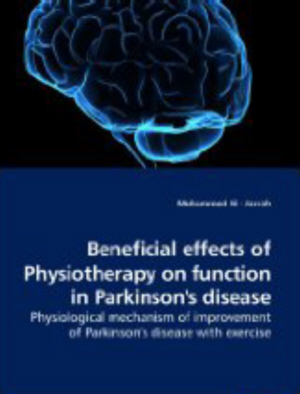 Publisher's
description : Drugs used to treat PD halt the symptoms of the disease for a few
years, but later can result in serious complications. Surgery as another option
available to treat PD has been shown to carry significant risk factors
and treat only certain symptoms of PD. Several studies demonstrated that
exercise provides protection against PD and lowers the risk of getting PD, but
most of these studies did not examine the physiological mechanisms of how
exercise helps patients with PD. In this book, we conducted experiments to begin
to narrow down the possible changes occurring with exercise in
chronic/progressive animal model of PD that would explain the beneficial
outcomes. These mechanisms include the beneficial effect of exercise on
Respiratory parameters such as O2 consumption, CO2 production, and heat production
in cardiac and skeletal muscles.
Click here for more details. For more
books concerning Parkinson's Disease go to
Parkinson's Disease Books. Publisher's
description : Drugs used to treat PD halt the symptoms of the disease for a few
years, but later can result in serious complications. Surgery as another option
available to treat PD has been shown to carry significant risk factors
and treat only certain symptoms of PD. Several studies demonstrated that
exercise provides protection against PD and lowers the risk of getting PD, but
most of these studies did not examine the physiological mechanisms of how
exercise helps patients with PD. In this book, we conducted experiments to begin
to narrow down the possible changes occurring with exercise in
chronic/progressive animal model of PD that would explain the beneficial
outcomes. These mechanisms include the beneficial effect of exercise on
Respiratory parameters such as O2 consumption, CO2 production, and heat production
in cardiac and skeletal muscles.
Click here for more details. For more
books concerning Parkinson's Disease go to
Parkinson's Disease Books.
11th September 2009
- News release
THE WORLD'S SMALLEST DEEP BRAIN
STIMULATOR FOR PARKINSON'S DISEASE
Approval has
been given for the world's smallest, longest-lasting rechargeable Deep Brain
Stimulator (DBS) for Parkinson's Disease. Deep Brain Stimulation (DBS)
involves the use in Parkinson's Disease of
electrodes that are implanted into the brain and connected to a small electrical
device that can be externally programmed. For more information go to
Deep brain stimulation.
The new small device is called the Brio neurostimulator. It is very thin and
light, and only slightly bigger than a man's wrist watch. Additionally, the
device has the greatest recommended implant depth of any rechargeable DBS
device.
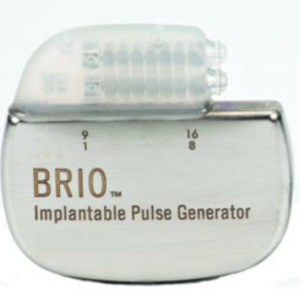 The thin profile and greater implant depth potentially makes the
neurostimulator less noticeable and more comfortable for patients. The Brio DBS
system delivers mild electrical pulses to specific targets in the brain,
stimulating the structures that are involved in muscular movement. The system
consists of a neurostimulator � a surgically implanted battery-operated device
that generates the electrical pulses � and leads which carry the pulses to the
brain to influence the irregular nerve signals responsible for the symptoms of
Parkinson�s Disease.
For
more details read the
News release.
In order to refer to this article on its own
click here. The thin profile and greater implant depth potentially makes the
neurostimulator less noticeable and more comfortable for patients. The Brio DBS
system delivers mild electrical pulses to specific targets in the brain,
stimulating the structures that are involved in muscular movement. The system
consists of a neurostimulator � a surgically implanted battery-operated device
that generates the electrical pulses � and leads which carry the pulses to the
brain to influence the irregular nerve signals responsible for the symptoms of
Parkinson�s Disease.
For
more details read the
News release.
In order to refer to this article on its own
click here.
9th September 2009 - New research
THE EFFECT OF ROPINIROLE
(REQUIP) ON PARKINSON'S DISEASE
Clinical neurology and neurosurgery
[2009] Sep 2 [Epub ahead of print] (Valldeoriola F, Cobaleda S, Lahuerta J.)
Complete abstract
Ropinirole is a dopamine agonist that is commonly used in the treatment of
Parkinson's Disease. It is often sold as
Requip, Ropark, or Adartrel.
For more information go to
Ropinirole. Ropinirole was found to be
mostly used as an add on treatment (in 76% of cases), and as the only treatment
in around a quarter (24%) of those people using it.
The average maintenance dose was found to be 9mg
per day, and normally be within the range 4mg to 15mg.
 Over a
quarter
(28%) of people taking Ropinirole reported adverse reactions. The
most frequent adverse reactions were somnolence and sedation (9%),
gastrointestinal symptoms (7%), increase in dyskinesia (6%), and orthostatic
symptoms (4%). Treatment using Ropinirole was withdrawn in 14% of patients,
largely because of either adverse reactions, lack of efficacy, or change in
treatment. Over 80% of people taking Ropinirole were considered by their
neurologists to have improved after taking it.
In order to refer to this article
on its own
click here. Over a
quarter
(28%) of people taking Ropinirole reported adverse reactions. The
most frequent adverse reactions were somnolence and sedation (9%),
gastrointestinal symptoms (7%), increase in dyskinesia (6%), and orthostatic
symptoms (4%). Treatment using Ropinirole was withdrawn in 14% of patients,
largely because of either adverse reactions, lack of efficacy, or change in
treatment. Over 80% of people taking Ropinirole were considered by their
neurologists to have improved after taking it.
In order to refer to this article
on its own
click here.
5th September 2009 - New research
RETINAL STEM CELLS DISAPPEAR
AFTER SURGERY FOR PARKINSON'S DISEASE
Neurology [2009]
Sep 2. [Epub ahead of print] (Farag ES, Vinters HV, Bronstein J.)
Complete abstract
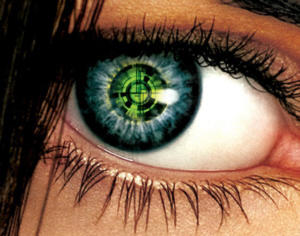 Retinal pigment epithelial cells have been found to disappear after being used
in a form of surgery intended for use in Parkinson's Disease. For years, the use
of implanted stem cells have been claimed to have the potential to rid
Parkinson's Disease. One of these means is the use of RPE
(retinal pigment epithelium) cells. These cells are
found in the eyes and can also produce dopamine, the substance whose deficiency
causes Parkinson's Disease. Retinal pigment epithelial cells have been found to disappear after being used
in a form of surgery intended for use in Parkinson's Disease. For years, the use
of implanted stem cells have been claimed to have the potential to rid
Parkinson's Disease. One of these means is the use of RPE
(retinal pigment epithelium) cells. These cells are
found in the eyes and can also produce dopamine, the substance whose deficiency
causes Parkinson's Disease.
A 68-year-old man
underwent surgical implantation of 325,000 RPE cells in
Spheramine
(gelatin microcarriers) for the
treatment
of Parkinson's Disease.
He happened to die six months after the surgery
took place. This enabled the researchers to see what happened to retinal stem
cells after surgical implantation. Over 99.9% of the cells had disappeared after
only six months. Implanted cells simply failed to survive.
A previous study using the same
methods demonstrated only a moderate benefit for six months. For more details
see the
Complete abstract.
Despite different forms of stem cell surgery now being carried out in countries
around the world, there is not even one study in the entire medical literature
showing that anybody has ever been rid of Parkinson's Disease by this means. In
order to refer to this article on its own
click here.
2nd September 2009 - News report
PIMAVANSERIN
FAILS CLINICAL TRIAL FOR PARKINSON'S DISEASE
Pimavanserin, a drug in development for psychosis related to Parkinson's Disease
failed to have any beneficial effect in clinical trials. Psychotic episodes,
such as hallucinations and delusions, sometimes occur in Parkinson's Disease.
The drug was being developed by Arcadia and Biovail.
For more information
go to
Biovail.
 Parkinson's Disease
is
largely
due to insufficient dopamine. Psychosis appears to be due to almost the opposite
- an excess or an accumulation of dopamine. This is why anti-psychotic drugs can
cause Parkinson's Disease symptoms, and why Parkinson's Disease drugs can
sometimes cause symptoms of psychosis. Pimavanserin is a "5-HT 2A receptor
inverse agonist". Biochemically that could have no effect on the excessive
dopamine found in psychosis. So the failure of Pimavanserin in clinical
trials is almost predictable.
The psychosis sometimes experienced in Parkinson's
Disease is normally due to the excessive use of dopaminergic drugs. So a
reduction in the use of those drugs is a more rational approach than using an
additional drug to combat the effects of dopaminergic drugs.
In order to refer to this article
on its own
click here. Parkinson's Disease
is
largely
due to insufficient dopamine. Psychosis appears to be due to almost the opposite
- an excess or an accumulation of dopamine. This is why anti-psychotic drugs can
cause Parkinson's Disease symptoms, and why Parkinson's Disease drugs can
sometimes cause symptoms of psychosis. Pimavanserin is a "5-HT 2A receptor
inverse agonist". Biochemically that could have no effect on the excessive
dopamine found in psychosis. So the failure of Pimavanserin in clinical
trials is almost predictable.
The psychosis sometimes experienced in Parkinson's
Disease is normally due to the excessive use of dopaminergic drugs. So a
reduction in the use of those drugs is a more rational approach than using an
additional drug to combat the effects of dopaminergic drugs.
In order to refer to this article
on its own
click here.
1st September 2009 - History
LEONARDO DA VINCI'S DESCRIPTIONS OF
PARKINSON'S DISEASE
The Italian artist, engineer and
scientist Leonardo da Vinci (1452-1519) also studied anatomy, physiology
and medicine. Leonardo da Vinci kept secret notebooks in which he wrote
and sketched his ideas and observations, in handwriting that only he could
read. So keen was he to study the human
body that he went out at night to dissect human corpses.
For more information go to
Leonardo da Vinci.
Over 300 years before James
Parkinson formally described Parkinson's Disease, Leonardo da Vinci saw
people whose symptoms coincided with those seen in Parkinson's Disease. Leonardo wrote in
his notebooks that "you will see.....those who.....move their trembling
parts, such as their heads or hands without permission of the soul; (the)
soul with all its forces cannot prevent these parts from trembling." In a
translation of Da Vinci's notebooks "The movements of paralytics of those
benumbed by
cold, whose head and members move without control of the soul,
who cannot stop the movements." The combination of difficulty with
voluntary movement ("paraletici") and tremor ("tremanti') leave little
doubt of the diagnosis of Parkinson's Disease.
At the end of his life Leonardo was unable to
paint due to the loss of control of movement in his hands. It has been
suggested that, by then, Leonardo had the disorder himself.
Due to most of his notebooks
remaining secret for centuries, Leonardo did not receive any credit for
contributing to the recognition of Parkinson's Disease.
In order to refer to this
article on its own
click here.
  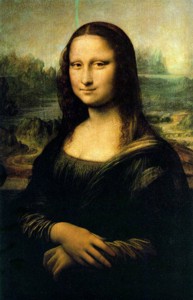   
|
.gif)
.gif)
 Publisher's
description : Deep brain stimulation (DBS) is increasingly used for the
treatment of patients with severe Parkinson's disease, but the technique and
science behind it is still poorly understood by most clinicians. This book is
intended to provide an overview of the use of DBS for movement disorders. The
first part of the book covers the varying surgical techniques involved in
implanting electrodes into various deep nuclei within the brain. The neuro-physiological
techniques involved in this process and the complex issue of programming the
implanted stimulator in order to optimize therapeutic efficacy and minimize
stimulation induced adverse effects. The second part of the book describes how
to select appropriate patients and describes the results of DBS treatment for
Parkinson's disease, dystonia and tremors. Edited by three of the world's
leading experts in the DBS field, this pocketbook provides neurologists,
trainees, and specialist nurses with an overview of the therapeutics use of DBS.
Publisher's
description : Deep brain stimulation (DBS) is increasingly used for the
treatment of patients with severe Parkinson's disease, but the technique and
science behind it is still poorly understood by most clinicians. This book is
intended to provide an overview of the use of DBS for movement disorders. The
first part of the book covers the varying surgical techniques involved in
implanting electrodes into various deep nuclei within the brain. The neuro-physiological
techniques involved in this process and the complex issue of programming the
implanted stimulator in order to optimize therapeutic efficacy and minimize
stimulation induced adverse effects. The second part of the book describes how
to select appropriate patients and describes the results of DBS treatment for
Parkinson's disease, dystonia and tremors. Edited by three of the world's
leading experts in the DBS field, this pocketbook provides neurologists,
trainees, and specialist nurses with an overview of the therapeutics use of DBS.
 Work
in agriculture, education, health care, or welding was not associated with
increased risk of Parkinsonism. Unexpected increased risks associated with
legal, construction and extraction, or religious occupations were not maintained
after adjustment for duration. However, having worked in business, finance,
legal occupations, construction and extraction, or transportation and material
moving was associated with postural instability and gait difficulty.
None of the occupations,
job tasks, or task-related exposures were associated with Parkinson's Disease
being diagnosed at a younger age. Pesticide use made the likelihood of
Parkinsonism almost twice (1.9 times) more likely. Use of any of 8 pesticides
more than doubled (2.2 times) the likelihood. This risk was even higher (2.59
times more likely) with the use of 2,4-dichlorophenoxyacetic acid.
In order to refer to this article
on its own
Work
in agriculture, education, health care, or welding was not associated with
increased risk of Parkinsonism. Unexpected increased risks associated with
legal, construction and extraction, or religious occupations were not maintained
after adjustment for duration. However, having worked in business, finance,
legal occupations, construction and extraction, or transportation and material
moving was associated with postural instability and gait difficulty.
None of the occupations,
job tasks, or task-related exposures were associated with Parkinson's Disease
being diagnosed at a younger age. Pesticide use made the likelihood of
Parkinsonism almost twice (1.9 times) more likely. Use of any of 8 pesticides
more than doubled (2.2 times) the likelihood. This risk was even higher (2.59
times more likely) with the use of 2,4-dichlorophenoxyacetic acid.
In order to refer to this article
on its own  Publisher's
description : A simple, sympathetic guide to coping with a progressive,
disabling brain disorder. Physician Cram was diagnosed with Parkinson's disease
ten years ago. Here he matches his personal experience with his experiences
treating other patients with the disease. Cram is a firm believer in four
elements to self-help : a positive attitude, information about the disease;
partnership with a knowledgeable physician, and a willingness to take action, to
do the things "that make you feel better, help slow the disability, and keep you
as independent as possible for as long as possible.'' Cram goes on to explain
the overall progression of the disease through five stages. The hope he offers
is that early self-help and medication may delay or even prevent the later
stages. He looks at at emotional considerations, diet, exercise, and
other lifestyle needs, as well as present and possible medical
treatments.
Publisher's
description : A simple, sympathetic guide to coping with a progressive,
disabling brain disorder. Physician Cram was diagnosed with Parkinson's disease
ten years ago. Here he matches his personal experience with his experiences
treating other patients with the disease. Cram is a firm believer in four
elements to self-help : a positive attitude, information about the disease;
partnership with a knowledgeable physician, and a willingness to take action, to
do the things "that make you feel better, help slow the disability, and keep you
as independent as possible for as long as possible.'' Cram goes on to explain
the overall progression of the disease through five stages. The hope he offers
is that early self-help and medication may delay or even prevent the later
stages. He looks at at emotional considerations, diet, exercise, and
other lifestyle needs, as well as present and possible medical
treatments.
 Delusions affect only about 5%. Hallucinations persist and
worsen and their prevalence increases with time. The symptoms are usually due to
Parkinson's Disease drugs. Dopaminergic agonists increase the likelihood of
symptoms, but there is no simple dose-effect relationship between dopaminergic
treatments and the presence or severity of hallucinations. Other factors
associated with hallucinations include older age, duration of Parkinson's
Disease, disease severity, altered dream phenomena, and daytime sleepiness. In
order to refer to this article on its own
Delusions affect only about 5%. Hallucinations persist and
worsen and their prevalence increases with time. The symptoms are usually due to
Parkinson's Disease drugs. Dopaminergic agonists increase the likelihood of
symptoms, but there is no simple dose-effect relationship between dopaminergic
treatments and the presence or severity of hallucinations. Other factors
associated with hallucinations include older age, duration of Parkinson's
Disease, disease severity, altered dream phenomena, and daytime sleepiness. In
order to refer to this article on its own
 The primary cause of
Parkinson's Disease is insufficient dopamine. Although insufficient dopamine
causes the excessive muscle contraction that is characteristic of Parkinson's
Disease, insufficient dopamine also affects the emotions, tending to make people
more prone to depression. This is why depression is common in many, but
certainly not all people with Parkinson's Disease. So the increased likelihood
of suicide and suicidal thoughts in Parkinson's Disease is largely caused due to
a biochemical deficiency of dopamine rather than by the practical problems and
circumstances that Parkinson's Disease can lead to.
In order to refer to this article
on its own
The primary cause of
Parkinson's Disease is insufficient dopamine. Although insufficient dopamine
causes the excessive muscle contraction that is characteristic of Parkinson's
Disease, insufficient dopamine also affects the emotions, tending to make people
more prone to depression. This is why depression is common in many, but
certainly not all people with Parkinson's Disease. So the increased likelihood
of suicide and suicidal thoughts in Parkinson's Disease is largely caused due to
a biochemical deficiency of dopamine rather than by the practical problems and
circumstances that Parkinson's Disease can lead to.
In order to refer to this article
on its own  Publisher's
description : Drugs used to treat PD halt the symptoms of the disease for a few
years, but later can result in serious complications. Surgery as another option
available to treat PD has been shown to carry significant risk factors
and treat only certain symptoms of PD. Several studies demonstrated that
exercise provides protection against PD and lowers the risk of getting PD, but
most of these studies did not examine the physiological mechanisms of how
exercise helps patients with PD. In this book, we conducted experiments to begin
to narrow down the possible changes occurring with exercise in
chronic/progressive animal model of PD that would explain the beneficial
outcomes. These mechanisms include the beneficial effect of exercise on
Respiratory parameters such as O2 consumption, CO2 production, and heat production
in cardiac and skeletal muscles.
Publisher's
description : Drugs used to treat PD halt the symptoms of the disease for a few
years, but later can result in serious complications. Surgery as another option
available to treat PD has been shown to carry significant risk factors
and treat only certain symptoms of PD. Several studies demonstrated that
exercise provides protection against PD and lowers the risk of getting PD, but
most of these studies did not examine the physiological mechanisms of how
exercise helps patients with PD. In this book, we conducted experiments to begin
to narrow down the possible changes occurring with exercise in
chronic/progressive animal model of PD that would explain the beneficial
outcomes. These mechanisms include the beneficial effect of exercise on
Respiratory parameters such as O2 consumption, CO2 production, and heat production
in cardiac and skeletal muscles.

 Over a
quarter
(28%) of people taking Ropinirole reported adverse reactions. The
most frequent adverse reactions were somnolence and sedation (9%),
gastrointestinal symptoms (7%), increase in dyskinesia (6%), and orthostatic
symptoms (4%). Treatment using Ropinirole was withdrawn in 14% of patients,
largely because of either adverse reactions, lack of efficacy, or change in
treatment. Over 80% of people taking Ropinirole were considered by their
neurologists to have improved after taking it.
In order to refer to this article
on its own
Over a
quarter
(28%) of people taking Ropinirole reported adverse reactions. The
most frequent adverse reactions were somnolence and sedation (9%),
gastrointestinal symptoms (7%), increase in dyskinesia (6%), and orthostatic
symptoms (4%). Treatment using Ropinirole was withdrawn in 14% of patients,
largely because of either adverse reactions, lack of efficacy, or change in
treatment. Over 80% of people taking Ropinirole were considered by their
neurologists to have improved after taking it.
In order to refer to this article
on its own  Retinal pigment epithelial cells have been found to disappear after being used
in a form of surgery intended for use in Parkinson's Disease. For years, the use
of implanted stem cells have been claimed to have the potential to rid
Parkinson's Disease. One of these means is the use of RPE
(retinal pigment epithelium) cells. These cells are
found in the eyes and can also produce dopamine, the substance whose deficiency
causes Parkinson's Disease.
Retinal pigment epithelial cells have been found to disappear after being used
in a form of surgery intended for use in Parkinson's Disease. For years, the use
of implanted stem cells have been claimed to have the potential to rid
Parkinson's Disease. One of these means is the use of RPE
(retinal pigment epithelium) cells. These cells are
found in the eyes and can also produce dopamine, the substance whose deficiency
causes Parkinson's Disease.
 Parkinson's Disease
is
largely
due to insufficient dopamine. Psychosis appears to be due to almost the opposite
- an excess or an accumulation of dopamine. This is why anti-psychotic drugs can
cause Parkinson's Disease symptoms, and why Parkinson's Disease drugs can
sometimes cause symptoms of psychosis. Pimavanserin is a "5-HT 2A receptor
inverse agonist". Biochemically that could have no effect on the excessive
dopamine found in psychosis. So the failure of Pimavanserin in clinical
trials is almost predictable.
The psychosis sometimes experienced in Parkinson's
Disease is normally due to the excessive use of dopaminergic drugs. So a
reduction in the use of those drugs is a more rational approach than using an
additional drug to combat the effects of dopaminergic drugs.
In order to refer to this article
on its own
Parkinson's Disease
is
largely
due to insufficient dopamine. Psychosis appears to be due to almost the opposite
- an excess or an accumulation of dopamine. This is why anti-psychotic drugs can
cause Parkinson's Disease symptoms, and why Parkinson's Disease drugs can
sometimes cause symptoms of psychosis. Pimavanserin is a "5-HT 2A receptor
inverse agonist". Biochemically that could have no effect on the excessive
dopamine found in psychosis. So the failure of Pimavanserin in clinical
trials is almost predictable.
The psychosis sometimes experienced in Parkinson's
Disease is normally due to the excessive use of dopaminergic drugs. So a
reduction in the use of those drugs is a more rational approach than using an
additional drug to combat the effects of dopaminergic drugs.
In order to refer to this article
on its own 




